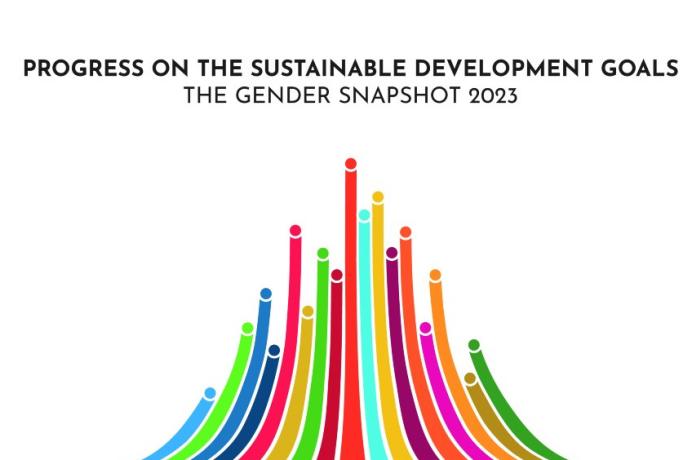Introduction: A Bleak Outlook
The United Nations, in its latest report titled “The Gender Snapshot 2023,” sheds light on the somber reality surrounding progress towards achieving gender equality by 2030, as stipulated in the U.N.’s Sustainable Development Goals (SDGs). The report underscores that deeply entrenched biases against women, prevalent across various sectors such as health, education, employment, and politics, threaten to derail this ambitious goal. It identifies active resistance to gender equality and chronic underinvestment as pivotal roadblocks, even leading to reversals in some instances.
Social Aspects: Struggles with Poverty and Violence
SDG 1 (No Poverty): The report highlights a distressing statistic that if current trends persist, over 340 million women and girls, approximately 8% of the female population, will be living in extreme poverty by 2030.
SDG 2 (Zero Hunger): Women face food insecurity, with one in four experiencing it. The report emphasizes the urgent need to address this issue.
Older Women’s Plight: Older women encounter higher poverty rates and violence compared to older men, with limited access to pensions, magnifying their vulnerability.
Violence: Shockingly, no country is on track to eliminate intimate partner violence, indicating a pressing need for comprehensive measures to combat this menace.
Conflict-Affected Contexts: The report observes a significant increase in the number of women and girls affected by conflicts, underscoring the urgency of addressing their unique challenges.
Political Aspects: Gender Disparities in Leadership
SDG 5 (Gender Equality): The report reveals that women still spend 2.3 more hours per day on unpaid care and domestic work than men, a stark reminder of gender disparities in domestic responsibilities.
SDG 13 (Climate Action): Climate change threatens to push approximately 158 million more women and girls into poverty by mid-century, highlighting the intersection of climate action and gender equality.
Progress on SDG: Progress towards achieving SDG 5, gender equality, is significantly off track, with only two indicators approaching the target.
Financial Aspects: Funding Gender Equality
Financial Requirement: To achieve gender equality across various key areas by 2030, the report estimates the need for $6.4 trillion annually in 48 developing countries.
Funding Gap: It warns of an alarming annual shortfall of $360 billion if current government expenditures persist, urging additional funding to bridge this yawning gap.
Wage Gap: Despite progress in many areas, the labor and earnings gap between men and women remains stubbornly high, with women earning only 51 cents for every dollar earned by men.
Persistent Challenges: Ongoing Hurdles
- Food Insecurity: Climate change exacerbates food insecurity, posing a significant challenge, especially for women.
- Intimate Partner Violence: Insufficient efforts to combat intimate partner violence persist, necessitating comprehensive strategies.
- Conflict-Affected Contexts: The rising number of girls and young women out of school in conflict-affected areas raises concerns about their future prospects.
- Earnings Gap: Persistent disparities in earnings between men and women in the labor force underscore the need for continued action.
Recommendations: A Call to Action
The report’s recommendations call for enhanced collaboration, increased funding, and policy interventions to address gender disparities comprehensively. It emphasizes that neglecting gender equality imperils the entire 2030 Agenda for Sustainable Development. Highlighting the potential benefits, the report notes that addressing gender gaps in agrifood systems could reduce food insecurity and boost global GDP by nearly $1 trillion.
In conclusion, “The Gender Snapshot 2023” report serves as a stark reminder of the formidable challenges that persist on the path to gender equality. It underscores the critical need for immediate and sustained action across various sectors to ensure that the vision of a gender-equal world by 2030 becomes a reality.










 Which District of Uttar Pradesh is Known...
Which District of Uttar Pradesh is Known...
 Daily Current Affairs 08th October 2025,...
Daily Current Affairs 08th October 2025,...
 Top-10 Indian States with the Highest Da...
Top-10 Indian States with the Highest Da...

